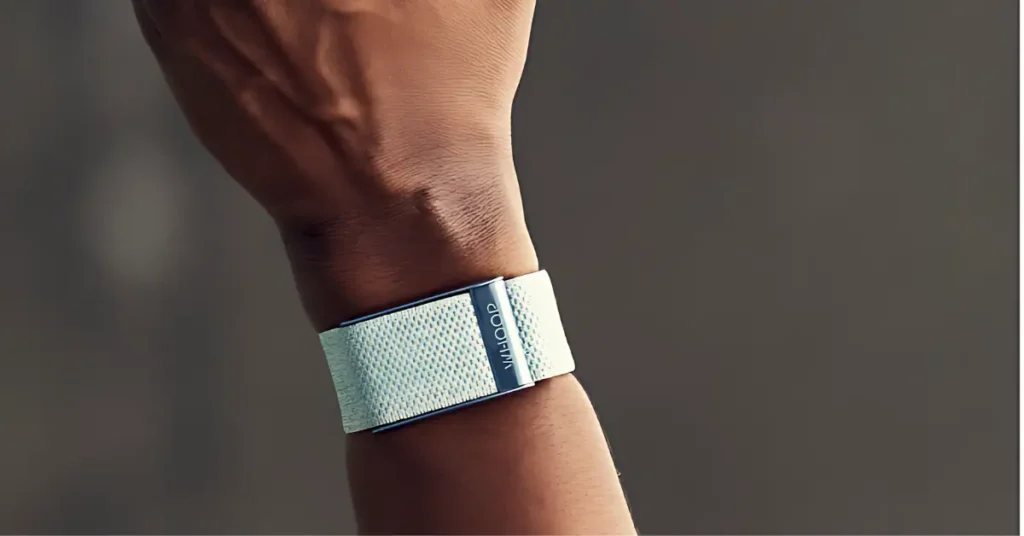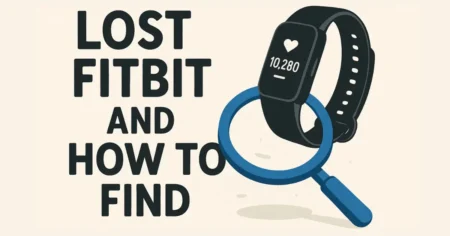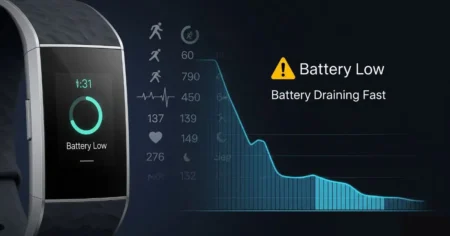WHOOP, strap-on, workout crushed; I’m pumped to see the calorie burn data! But wait… why are my WHOOP calories so low? I thought these things were supposed to be the ultimate in accuracy.
For fitness fanatics like myself, WHOOP’s calorie tracking metrics can be a bit of a head-scratcher. They often seem lower than what we expect or see from other trackers, which can be frustrating.
This post will dive into the reasons behind those low-calorie counts and offer solutions to maximize your WHOOP data.
How Does WHOOP Calculate Calories?
WHOOP calculates calories burned by considering factors like Basal Metabolic Rate (BMR) and heart rate data. The device’s algorithm incorporates these variables to estimate calorie expenditure accurately.
WHOOP emphasizes the importance of mindful eating and understanding that calorie estimates are just that – estimates, with a margin of error of up to 20% as permitted by the FDA.
While WHOOP’s calorie tracking provides valuable insights, it’s essential to recognize that these readings are relative and can be used to monitor trends in caloric burn rather than as precise measurements
Why Are My WHOOP Calories So Low?

Your WHOOP device might show lower calories because it uses a special formula that can underestimate calories by about 10-20% compared to other trackers.
Wrist-worn devices like WHOOP have limits in accurately measuring calories, as they can’t directly track your basic metabolic rate. Making sure you wear your WHOOP correctly can help improve accuracy.
Also, remember that WHOOP’s estimates may be lower than devices like the Apple Watch, which tend to overestimate calories. Using WHOOP to track changes in your calorie burn over time is important rather than an exact count.
While the low-calorie counts might be a concern, there are a few things you can do to potentially improve the accuracy of your WHOOP calorie measurement, although it’s important to remember that the algorithm plays a big role:
Wear Your WHOOP Properly
To improve the accuracy of your calorie readings, wear your WHOOP device correctly. With minimal movement, position it flat on your arm for consistent heart rate tracking.
Manually Calculate Your Calories
You can manually track your food intake and physical activity to compare against WHOOP’s estimates. It can help you adjust the calorie readings to represent your energy expenditure accurately.
Compare to Other Devices
If you can access other fitness trackers like an Apple Watch, compare the calorie readings to understand your energy expenditure better. Different devices may provide varying estimates, so comparing can help you adjust your WHOOP readings accordingly.
Following these steps, you can address low WHOOP calorie readings and get a more accurate picture of your energy expenditure to track your fitness goals better.
How Accurate is the WHOOP Calorie Count?
The accuracy of the WHOOP calorie count is subject to some limitations and considerations.
WHOOP provides heart-rate-based calorie estimates that are more reliable for tracking relative changes in calories burned rather than providing precise absolute values. During a running step test, the subject burned an estimated 323.07 calories.
Interestingly, while wearing both an Apple Watch and a WHOOP 4.0 band, the WHOOP’s calorie burn calculation of 327 calories was closer to the actual value than the Apple Watch’s reading.
Related :-
Q1. How do I make my WHOOP Calories more Accurate?
Make sure your WHOOP is flat against your arm and securely fastened enough to prevent movement even during intense motion or activity for the best HR and calorie accuracy.
Q3. How Does WHOOP Calculate Calories Burned?
WHOOP calculates calories in two steps:
Base Calories: It estimates your Basal Metabolic Rate (BMR) based on age, height, weight, and gender.
Activity Calories: It adds calories burned during activity based on your heart rate. For high-intensity activities, a special formula considers factors like heart rate variability (HRV).
While WHOOP might seem to underestimate calories compared to other trackers, it prioritizes accuracy and takes more health factors into account.







